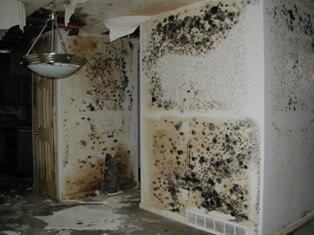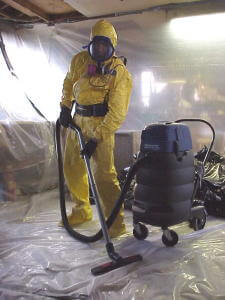What is Mold Remediation in San Francisco
 Mold remediation — the assessment and removal of mold — is very important because mold can not only pose a health hazard and cause damage to the home, but is often a sign of bigger problems such as a leaky roof, structural or plumbing problems, contamination in HVAC systems, condensation due to insufficient insulation, or many other serious issues that would need to be addressed as soon as possible. If you know or even suspect that you have mold in your home, take care of the problem promptly by calling remediation experts.
Mold remediation — the assessment and removal of mold — is very important because mold can not only pose a health hazard and cause damage to the home, but is often a sign of bigger problems such as a leaky roof, structural or plumbing problems, contamination in HVAC systems, condensation due to insufficient insulation, or many other serious issues that would need to be addressed as soon as possible. If you know or even suspect that you have mold in your home, take care of the problem promptly by calling remediation experts.
After assessment and stopping the source of the water or moisture, the first step is containment. Mold removal requires careful containment of the area during cleanup to prevent airborne spores from spreading to other areas in the home.
Killing Mold is Not Enough
The next step is eradication. Simply killing the mold is not enough; it must be completely removed because some of the substances that can cause health problems may be present even in dead mold. Removal may involve spraying the mold with biocide (an EPA-approved mold-killing liquid) or using a pressurized stream of dry ice for abrasive cleaning. Dry ice is the solid form of carbon dioxide, and can be used on surfaces such as wood or concrete. Dry ice blasting is a very effective method of mold removal and is recommended by the EPA as a safer alternative to some types of solvent-based cleaning since it does not leave any chemical residue.
After removal, an encapsulation spray is needed to ensure that the mold does not grow beyond the treated area and to contain any remaining mold spores. Then the air has to be filtered to remove any airborne spores or particulates. This is usually accomplished with HEPA (High Efficiency Particulate Air) filters and negative air handlers.

During remediation, any materials that have been damaged by mold must be discarded. Porous material such as fabric, wood and paper, for example, can be so infested with mold that cleaning is not possible. If the mold damage is extensive, removal or repair of plumbing, drywall, roofing materials, and other structural components may be necessary. This is one reason why proper mold remediation is best left to the experts.
By keeping an eye out for excessive moisture, flooding, leaks, or condensation in areas around your home, especially attics, basements, crawl spaces and other damp places where mold loves to flourish, you can prevent this threat to your health and home.
